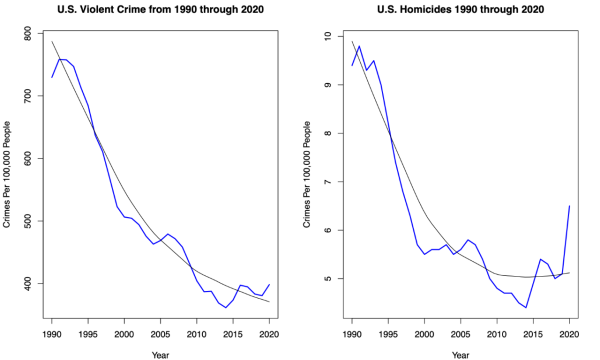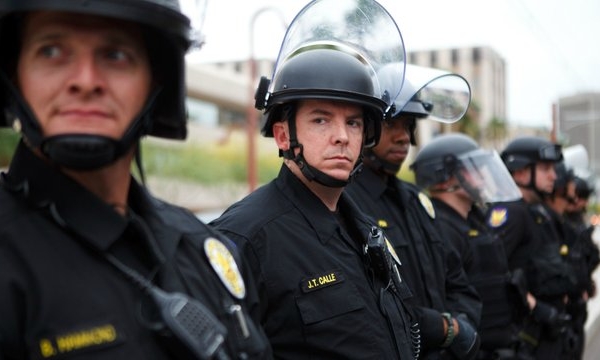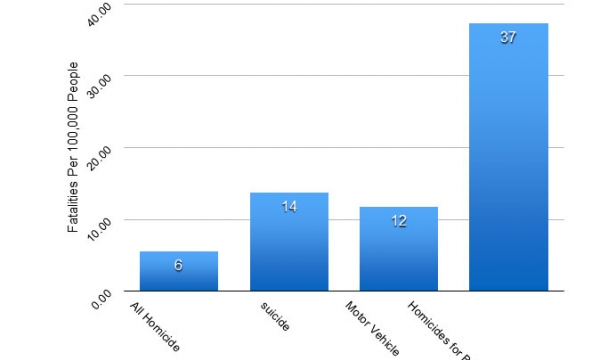Fact Checking
-
Is Violent Crime Increasing?
Richard Berk
Violent crime recently has been increasing in the United States. Although data from the Uniform Crime Reports are complete only though 2020, local data that now are available suggest that in many areas of the country, violent crime increases have continued into 2022. There also have been several recent mass shootings, defined by four or more deaths from a single shooting incident. Mass shootings account for a tiny fraction of all homicides but add dramatically to the visibility of gun violence.
Continue Reading
-
What is a Mass Shooting? What can be done?
Richard Berk
On Saturday night, June 4th, 15 people were shot while enjoying a night out on the 200 block of South Street in Philadelphia. Restaurants, bars, and entertainment venues had drawn large crowds when a fight broke out, and shots were fired. Eleven people were wounded. Three were killed. Because of the large number of revelers and an earlier incident, many police officers already had been patrolling near by. As the shooting began, some bystanders drew their handguns. It is not clear whether they fired any shots.
Continue Reading
-
Do Russian Police Fabricate Drug Offenses? Evidence From Seized Heroin's Weight Distribution
Current Russian drug policy is punitive toward people who use drugs. Moreover, criminal justice in Russia is driven by strong organizational incentives to increase performance indicators of police such as clearance rate. Taken together, these might lead to the use of extrajudicial and illegal police practices, as documented by several qualitative studies. In this article, we explore quantitative evidence of such practices, namely, weight anomalies of the seized heroin that result from minimum threshold amounts established by the law.
Continue Reading
-
Does Legal Regulation of the Police Impact Crime?
John MacDonald
In the past few years, the topic of police reform, and the role of legal interventions by the courts has been discussed by politicians and covered extensively in the media. One of the more intrusive forms of court interventions is the use of a consent decree – a settlement agreement filed in federal court between plaintiffs and the local government agency in charge of the police. Typically consent decrees are overseen by a judge, who can legally enforce provisions in the agreement.
Continue Reading
-
Can One Believe Forensic Evidence?
Richard Berk
<p>(Updated 9-11-2017)</p>
<p class="Body">The several television programs under the CSI (Crime Scene Investigation) brand are crime dramas depicting how sophisticated forensic tools are used to solve cases. Because such tools are based on science, they are only as good as the science on which they rest. How good is the science? As the references listed below make plain, much of the forensics depicted in television programs is at best fanciful, and real-life forensics are too often not much better.</p>Continue Reading
-
Do Mexican Immigrants "Cause" Crime?
Aaron J. Chalfin
Since 1980, the share of the US population that is foreign born has doubled, rising from just over 6% in 1980 to over 12% in 2010. Compounding this demographic shift, the share of the foreign born population of Mexican origin also doubled, leading to a quadrupling of the fraction of US residents who are immigrants from Mexico. A majority of recent immigrants of Mexican origin living in the United states are thought to be undocumented, leading to a contentious policy debate concerning the collateral consequences of this particular type of immigration.
Continue Reading
-
What Are The Chances of Becoming A Homicide Victim?
Richard Berk
With all of publicity surrounding crime statistics, it is easy to get a misleading impression about the risks that homicides pose. Recent data from the Centers for Disease Control can provide a factual basis from which to assess the real risks.
Continue Reading
-
Do We Incarcerate Too Many People?
Richard Berk
From the 1970s until about 2010, the number of individuals incarcerated in state prisons, federal prisons, and local jails increased dramatically. The main drivers were (1) changes in laws leading to longer, often mandatory, sentences, (2) "truth-in-sentencing" legislation requiring individuals convicted of violent crimes to serve at least 80% of their sentences, and (3) increased use of incarceration for drug-related crimes. Since then, there have been concerted efforts in some jurisdictions to reduce the number of individuals incarcerated.
Continue Reading
-
Raise the Age
Charles Loeffler
Recent empirical research has shown that juveniles do not achieve complete psychosocial maturity until post-adolescence and that trying juveniles as adults can be associated with elevated rates of criminal recidivism (Steinberg & Cauffman, 1996). In response to these as well as other concerns, several states including Illinois, Connecticut, Massachusetts, Mississippi, and New Hampshire, have recently raised their legal ages of majority in the hopes of reducing juvenile offending rates.
Continue Reading
-
Does Stop-And-Frisk Reduce Crime?
John MacDonald
Some politicians claim that the New York Police Department’s (NYPD) extensive use of stop, question, and frisk practices in the past are the primary cause of New York’s low crime rate. Is this claim supported by research?
Continue Reading
-
Does the Death Penalty Deter Crime?
Richard Berk
There have been claims for decades that in the United States the death penalty serves as a deterrent. When there are executions, violent crime decreases. But there have also been claims that executions “brutalize” society because government agencies diminish respect for life when the death penalty is applied. With brutalization comes an increase in violent crime, and especially homicides. Both sides assert that there is credible research supporting their position.
Continue Reading












